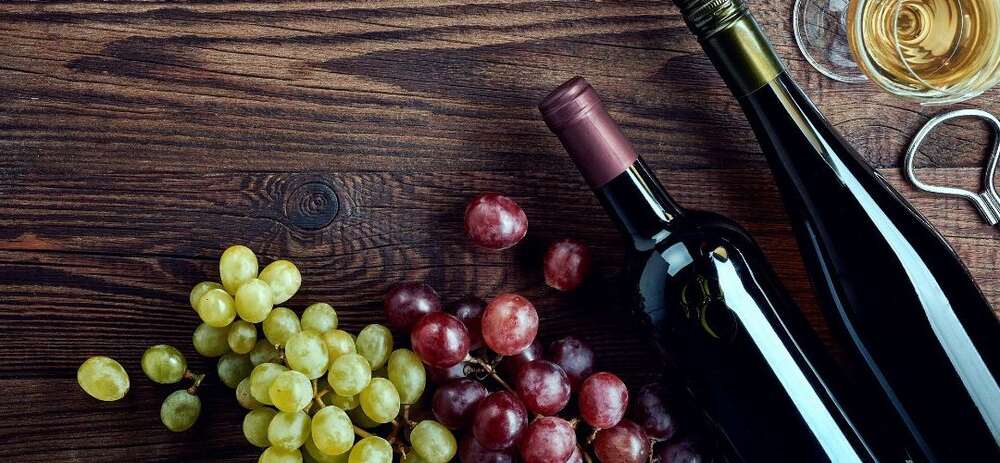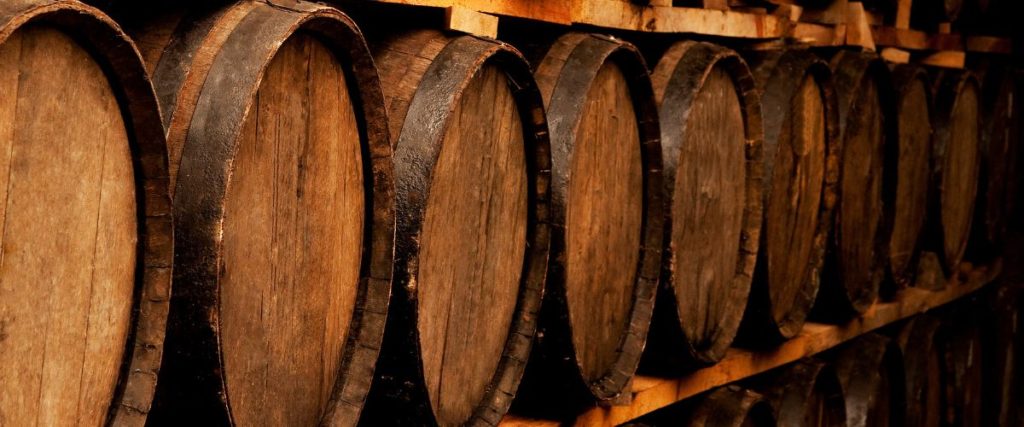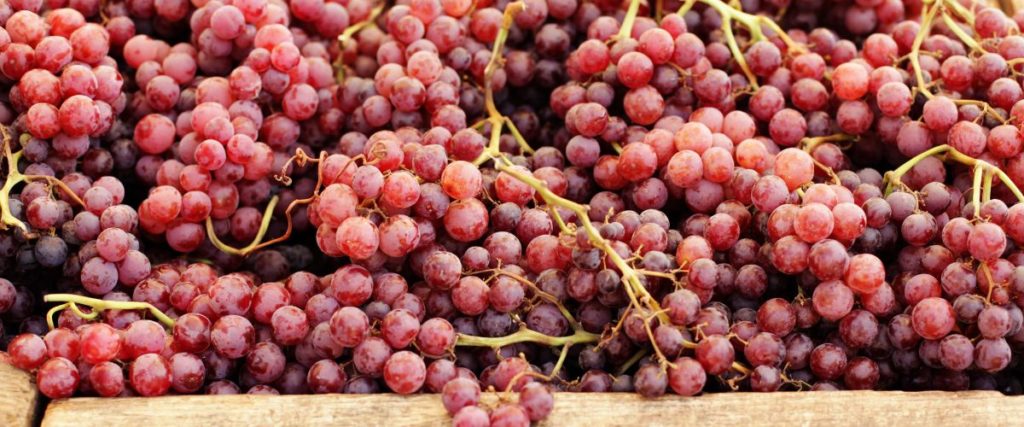You may not have thought about this, but it is a common question among winery and vineyard owners, not to mention wine aficionados. Customers always ask vineyard and winery owners why wine is priced the way it is. If you have ever wondered how your favorite bottle of wine is priced, or you are thinking about changing the price of your wine, here is a go-to guide on wine pricing.
The Cost of the Grapes Themselves
One of the largest expenses wineries have when they make a bottle of wine is the cost of the grapes themselves. Each grape variety has a price tag, usually measured in tons. For example, the Caberlot grape, an extremely rare wine grape that is only cultivated in one area of France, is extremely expensive to purchase. By comparison, the Pinot Grigio grape is much more cost-efficient, not to mention versatile. No matter which grape variety you use, a lot of wine can come from a ton of grapes. Wineries can make about 2 barrels of wine from one ton of grapes, which equals 720 bottles of wine from one ton of grapes.
Of course, when you buy grapes by the ton, you aren’t just paying for the grapes. You are also paying for the cost of growing the grapes, including the grape seed, organic fertilizers and pesticides, the labor needed to harvest the grapes, and even the startup costs for grapevines. Since it can take up to four years to produce the perfect wine grape from the original grapevine, it’s no wonder a ton of grapes isn’t cheap.
The Cost of the Barrels and Tanks
Wine production can’t happen without wineries aging the wine in barrels or barriques. Whether you call them barrels or the French barriques, your winery has to pay for the wine to age. The cost of the barrels used to age wine vary depending on the type of wood used, and each winery has a preference for which wood ages wine the best.
In many areas of wine production in the United States, white oak is used for wine aging barrels because it is porous and works to age wine quickly. However, winemakers may prefer several other kinds of wood over white oak to age wine, such as hickory, redwood, maple, French oak, walnut, cherry, or chestnut. All of these types of wood may be used by wineries for aging, and each wood adds flavor properties to the wine. For example, a winemaker may love the redwood barrel for aging wine because it adds a note of dark spice especially coveted by some red wine drinkers. No matter which type of barrel you choose, you’re going to pay a pretty high price for a barrel. French oak barrels are extremely expensive, with some barrels made from French oak selling for $3000.
Fermentation tanks for wine is also an extremely viable solution in terms of aging your wine. These tanks are typically controlled by a computer to give each batch the ability to stay at a previously regulated temperature. While Stainless Steel tanks are going to be more expensive than a traditional barrel, the fact that they tend to deprecate slower, easier to clean, and allows you to roll the deprecation costs into your bottles of wine at a much more accurate rate.
The Costs of Wine Production
Winemaking doesn’t end with the barrel, of course. There is a lot to be done once the wine finishes aging in the barrel. You have to figure in the cost of personnel needed to bottle the wine and those costs of production.
Wineries have to have machinery for bottling the wine or, in some instances, personnel to bottle the wine. All of those production costs which is going to include:
- Labor costs for employees of the company
- Utilities
- Building costs such as rent, lease, or mortgage payments as well as maintenance.
For some companies, the points mentioned above might not apply, especially if you have a wine making agreement with another company or manufacturer. In these agreements, you’ll typically be charged a flat monthly rate or a per gallon rate to produce your wine, making it easier to incorporate that cost into your per bottle pricing.
Wine production costs can vary greatly depending on the size of the winery. If you have a small vineyard of about an acre, you are bottling around 720 bottles of wine each year. Your wine production costs will be much smaller than a huge winery with tens of thousands of acres of grapes to pick, age, and bottle. However, you cannot always assume the larger production of wine equals less expensive wine. There are small vineyards where more expensive grapes are grown, and the wine is small-batch, but the cost of the bottle is extremely high because the wine is in demand. Demand for a particular wine vintage can drive up wine pricing.
Bottling Costs to be Considered
There is so much that goes into bottling wine that each area that oftentimes some aspects of it get overlooked or estimated so hastily that you be losing out or wasting money.
Glass Bottling
Besides production costs, wine pricing includes the price of the wine bottle. Wine bottles have been used for centuries to bottle wine. Usually, winemakers favor clear glass or green glass for making bottles. Of course, the fancier the bottle, the more expensive the wine will be. Pricy crystal wine bottles have been used for aging expensive wine. Also, more expensive wine bottles have a thicker glass with indentations on the bottom of the wine bottle for better aging. The most important factor for wine bottles is their ability to keep out oxygen so the wine can be flavorful for decades.
Closures
The tree bark used to make corks is nearly as old as the bottles themselves. Like wine barrels and bottles, many winemakers favor particular types of cork. Most winemakers favor oak corks, but specialty winemakers would rather have French oak or redwood corks. This doesn’t even include synthetic options that are available. The fact of the matter is, with the large variety in closure options available and how each type can affect your wine, this pricing segment typically gets special consideration.
Labeling
Wine labeling can also be pricey, depending on how much the wine labels cost to produce. Also, you most likely did not come up with the label yourself. One aspect of marketing that is often overlooked is branding with labels. You have to come up with a visual representation of your wine brand. Simple black and white wine labels are the least expensive, while full-color, gold-edged wine labels are the most expensive.
Other Costs You Need to Consider
Just because you have figured out the costs of wine production so you can price your bottles doesn’t mean that is the price your customers actually pay for that bottle. If you only price your bottles for sale in your winery, you don’t have to worry about the differences between wholesale and retail margins. However, when you sell your wines to liquor stores and restaurants, you need to understand your wine bottle will undergo a markup. The wholesale price markup is usually your profit margin, and the retail price markup represents the profit margin for the store or restaurant. Usually, there is between a 30% and a 50% markup for a bottle of wine. If you sell a bottle of wine to a retailer for $20, it will most likely sell for $30 to $35 a bottle at a liquor store.
Restaurants and bars also mark up bottle prices, whether they sell the wine by the glass or bottle. In fact, a glass of your wine at some restaurants could be as much as the wholesale price of the bottle of wine. Both wholesale and retail pricing for wine depends on the demand for the particular wine vintage.
How Should I Price My Wine?
It can be challenging to price a bottle of wine from your winery. You have put your heart, soul, blood, sweat, and tears into your passion for winemaking, and you want to price the wine according to the effort. However, when you price a bottle of wine, you need to consider a number of factors. All of these questions translate into numbers for wine pricing for your business.
- How much did the wine production cost?
- How much did the wine cultivation cost?
- Is the wine vintage in demand, or is it exceptionally a rare vintage?
- Is the wine small-batch aged?
- How much did marketing and sales cost you?
- Who do you primarily sell to?
- Is your vineyard and winery in demand?
- What type of grapes did you use?
For Additional Help Costing Your Wine Contact Protea Financial Today
Many factors go into pricing a bottle of wine, and it can be complicated to determine a pricing strategy for your wines. The numbers can float around your head in a confusing swirl of numbers. However, keep in mind that pricing should not be an emotional issue, no matter how much love you put into the bottle. You need to make sure your pricing strategy is based on solid numbers. If you need help pricing your wine for sale on the wholesale or retail market, you need to consider Protea Financial. We have bookkeepers, accountants, and inventory managers who understand the vineyard and winery business because that is their specialty. When you need help with the financial end of accounting and bookkeeping, we can help get you organized and help you reach your business goals. Contact Protea Financial today.
Costing out a bottle of wine can be a complicated endeavor. Turn to the financial experts here at Protea Financial today and let us help!
FAQ Section: Wine Pricing Explained
Why is wine priced the way it is?
Wine pricing is influenced by various factors, including the cost of grapes, barrels, production, bottling, and marketing. Wineries consider the quality of grapes, aging methods, bottle materials, and branding efforts when setting prices. Ultimately, pricing reflects the craftsmanship, demand, and market positioning of the wine.
What factors contribute to the cost of grapes?
The cost of grapes encompasses more than just the fruit itself. It includes expenses like labor, fertilizers, pesticides, and vineyard maintenance. Additionally, the rarity and quality of grape varieties, such as Caberlot or Pinot Grigio, influence pricing. Each grape variety offers unique flavors and characteristics, impacting production costs and eventual wine pricing.
How do barrels and tanks affect wine pricing?
Aging wine in barrels or tanks incurs significant costs for wineries. Factors like the type of wood used in barrels (e.g., French oak, redwood) and the material of fermentation tanks (e.g., stainless steel) affect wine flavor and aging. The choice between barrels and tanks depends on winemakers’ preferences and desired outcomes, with each option contributing to overall production expenses.
What production costs are involved in winemaking?
Winemaking involves various production expenses, including labor, utilities, and facility maintenance. Additionally, bottling wine requires machinery or personnel, adding to production costs. Small vineyards may have lower production expenses compared to larger wineries, but factors like grape quality and demand influence final wine pricing.
How do bottling costs impact wine prices?
Bottling wine entails expenses for glass bottles, closures (such as corks), and labeling. Wineries choose bottle materials and closure types based on their wine’s branding and aging requirements. Factors like bottle design, closure quality, and label complexity contribute to bottling costs, influencing the overall pricing strategy for wine.
What considerations are there for wholesale and retail pricing?
Wineries must consider both wholesale and retail pricing when selling their wines to liquor stores and restaurants. Wholesale prices include the winery’s profit margin, while retailers apply a markup to cover their own profit margin. Demand for specific wine vintages influences both wholesale and retail pricing, with markups varying between 30% and 50% on average.
How should wineries determine their wine pricing strategy?
Pricing wine involves analyzing production costs, market demand, and branding efforts. Wineries should consider factors like grape cultivation expenses, wine aging methods, and target customer demographics. Crafting a pricing strategy based on solid financial data ensures competitiveness and profitability in the wine market.
What role does branding play in wine pricing?
Effective branding enhances wine value and influences pricing decisions. Wine labels serve as visual representations of a winery’s brand identity, impacting consumer perceptions and purchasing decisions. From simple to elaborate designs, wine labels contribute to the overall marketing strategy and pricing positioning of the wine.
How can wineries seek assistance with pricing and financial management?
Wineries can benefit from professional financial services tailored to the vineyard and winery industry. Companies like Protea Financial offer expertise in bookkeeping, accounting, and inventory management, helping wineries streamline financial operations and optimize pricing strategies for sustainable growth.
Why is it important to base wine pricing on solid financial data?
Emotions should not drive wine pricing; instead, wineries should rely on accurate financial analysis. Pricing decisions grounded in solid data ensure profitability and competitiveness in the wine market. Professional financial services can provide valuable insights and assistance in developing robust pricing strategies tailored to wineries’ unique needs.





